12 incredible temples in Siem Reap that you must visit

Siem Reap is the capital city of Siem Reap Province in northwestern Cambodia. It is a popular resort town and a gateway to the Angkor region.Siem Reap is a popular tourist destination and has a large number of hotels, resorts, restaurants, and businesses closely related to tourism. It has many ancient Angkor temples, which are the popular tourist attractions in Cambodia. Here is the list of 12 incredible temples in Siem Reap that you must visit.

Angkor Wat
Angkor Wat, the largest monument of the Angkor group and the best preserved, is an architectural masterpiece. Its perfection in composition, balance, proportions, reliefs and sculpture make it one of the finest monuments in the world. Angkor Wat was built in the first half of the 12th century. Estimated construction time of the temple is 30 years by King Suryavarman II, dedicated to the god Vishnu. Angkor Wat is located about six kilometers (four miles) north of Siem Reap, south of Angkor Thom.Read more: Important things to know before visiting Angkor Wat
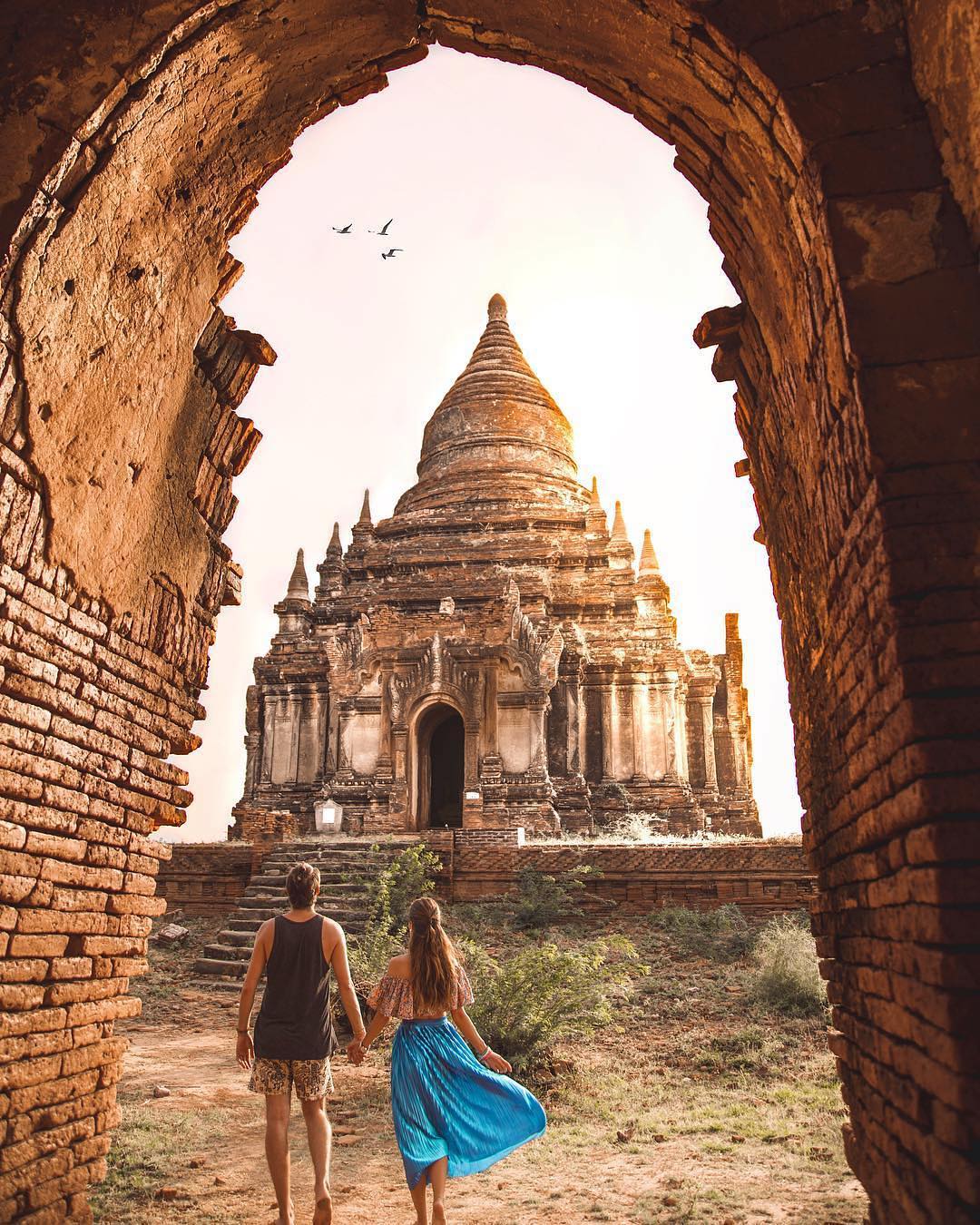
Since the 1990s, Angkor Wat has become a major tourist destination. By 2004, government figures show that 561,000 foreign visitors had arrived in Siem Reap province that year.Angkor Wat is one of the world’s foremost ancient sites, with the epic proportions of the Great Wall of China, the detail and intricacy of the Taj Mahal, and the symbolism and symmetry of the pyramids, all rolled into one. Admire the divine beauty of Angkor complex now!
- Angkor Wat day tours guided by local experts
- Angkor Wat sunrise private tour
- Angkor Wat sunset private tour by tuk tuk
Angkor Thom
Angkor Thom, literally meaning ‘Great City’, was the last and most enduring capital city of the Khmer Empire. Angkor Thom is a complex within a square of 9 kilometers, including various temples and a Royal Palace as a royal city. It was established in the late 12th Century by King Jayavarman VII. There are many ancient temples inside the walls of the city. Most of the great Angkor ruins have vast displays of bas-relief depicting the various gods, goddesses, and other-worldly beings.

The city lies on the west bank of the Siem Reap River, a tributary of Tonle Sap, about a quarter of a mile from the river. The south gate of Angkor Thom is 7.2 km north of Siem Reap, and 1.7 km north of the entrance to Angkor Wat. Angkor Thom was abandoned sometime prior to 1609, when an early western visitor wrote of an uninhabited city, "as fantastic as the Atlantis of Plato".
Ta Prohm
Ta Prohm is the modern name of the temple at Angkor, Siem Reap Province, Cambodia. Built in the Bayon style largely in the late 12th and early 13th centuries and originally called Rajavihara. Located one kilometer east of Angkor Thom and on the southern edge of the East Baray, it was founded by the Khmer King Jayavarman VII as a Mahayana Buddhist monastery and university.
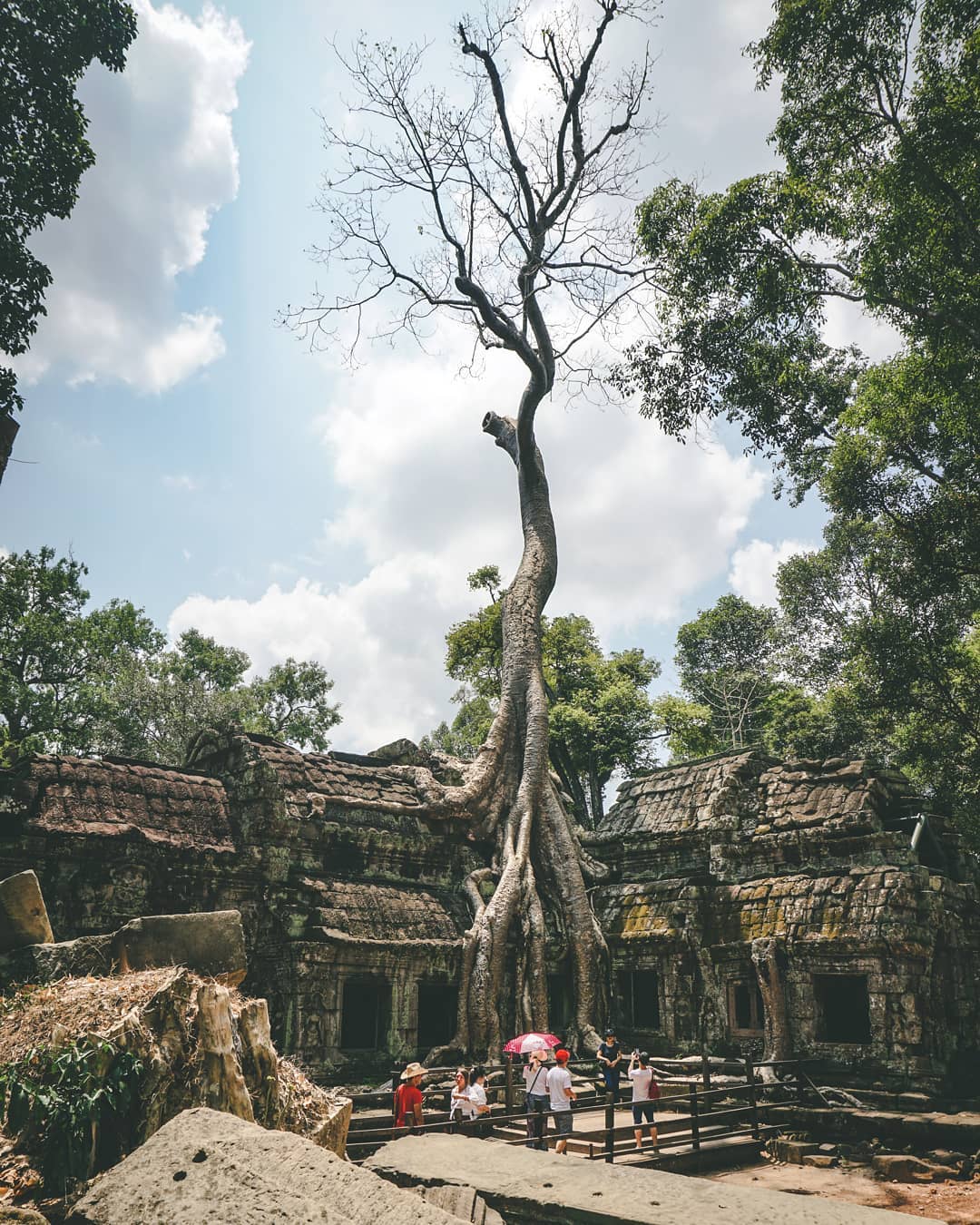
Unlike most Angkorian temples, Ta Prohm is in much of the same condition in which it was found: the atmospheric combination of trees growing out of the ruins and the jungle surroundings have made it one of Angkor's most popular temples with visitors. UNESCO inscribed Ta Prohm on the World Heritage List in 1992. Today, it is one of the most visited complexes in Cambodia’s Angkor region.
Bayon
The Bayon is a well-known decorated Khmer temple at Angkor in Cambodia. Built in the late 12th or early 13th century as the official state temple of the Mahayana Buddhist King Jayavarman VII, the Bayon stands at the center of Jayavarman's capital, Angkor Thom. Following Jayavarman's death, it was modified by later Hindu and Theravada Buddhist kings in accordance with their own religious preferences.
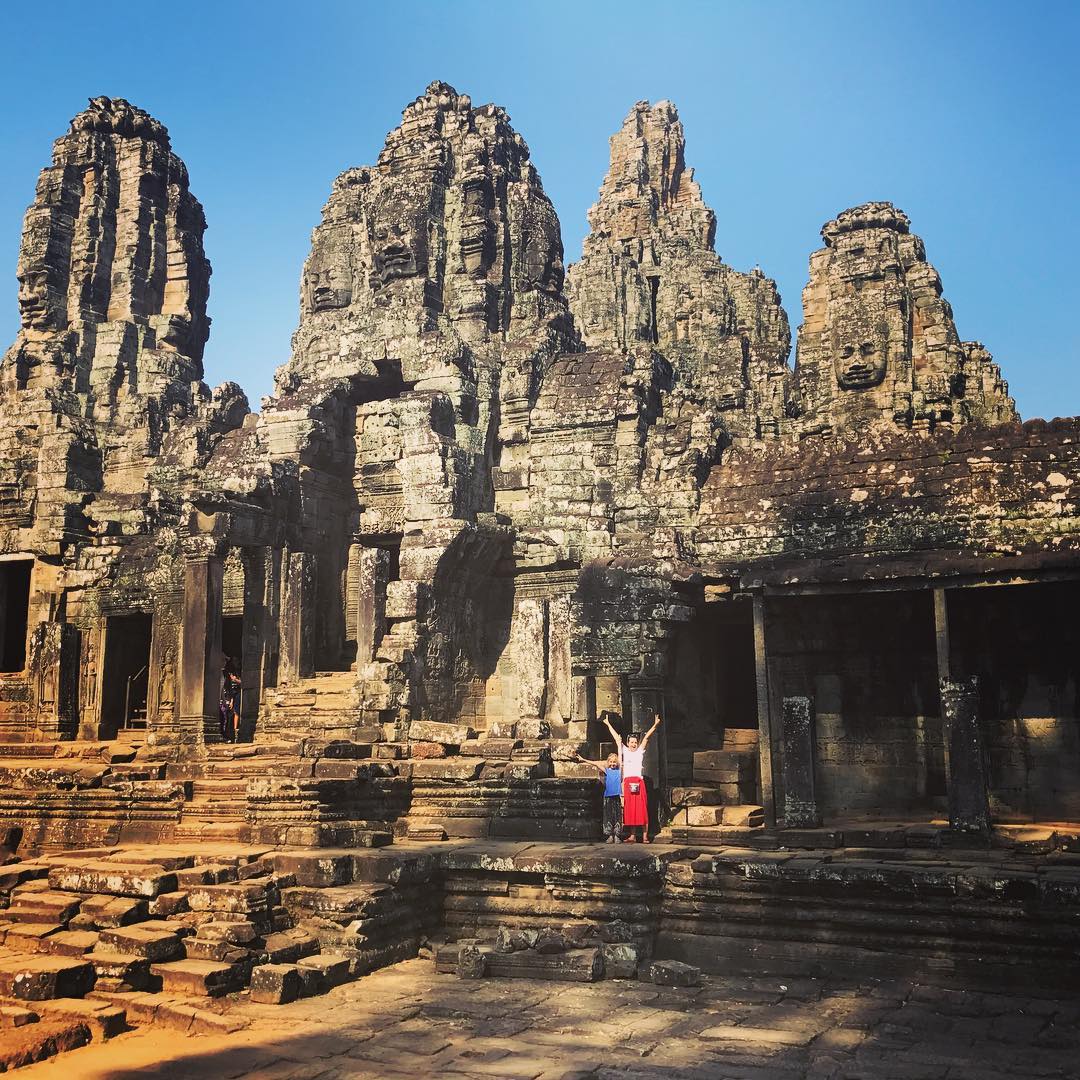
The Bayon's most distinctive feature is the multitude of serene and smiling stone faces on the towers. The temple is known also for two impressive sets of bas-reliefs, which present an unusual combination of mythological, historical, and mundane scenes. The Japanese Government Team for the Safeguarding of Angkor has described the temple as "the most striking expression of the baroque style" of all Khmer architectures.
Ta Keo
One of the tallest monuments of Angkor, the Ta Keo is a mountain temple built by Jayavarman V, It’s located east of Angkor Thom. Its five sanctuaries are placed on top of a 22 meter high five stepped pyramid, from where there are good views of the surrounding area. The pyramid-shaped Ta Keo was build to represent Mount Meru, the mountain that is the center of the world in Hindu mythology.
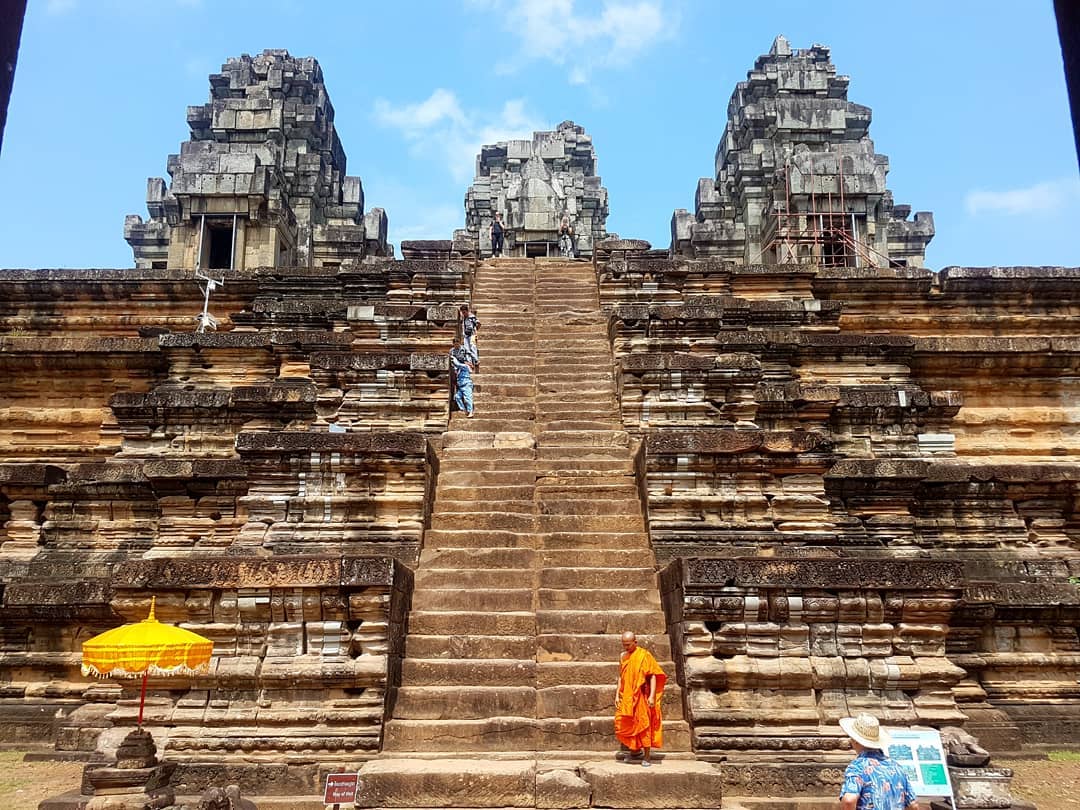
An unusual aspect of this temple is that it remains unfinished. If it had been finished, Ta Keo would undoubtedly have been one of the finest temples at Angkor. It is an imposing sight, scaling 22 meters (72 feet) to the sky, and gives an impression of power. Ta Keo is the first temple built entirely in sandstone and as such serves as a milestone in Khmer history. The absence of decoration at ta Keo gives it a simplicity of design that separates it from the other monuments.
Banteay Kdei
Banteay Kdei, meaning "A Citadel of Chambers", also known as "Citadel of Monks' cells", is a Buddhist temple in Angkor, Cambodia. It is located southeast of Ta Prohm and east of Angkor Thom. Built in the mid-12th to early 13th centuries AD during the reign of Jayavarman VII, it is in the Bayon architectural style, similar in plan to Ta Prohm and Preah Khan, but less complex and smaller.
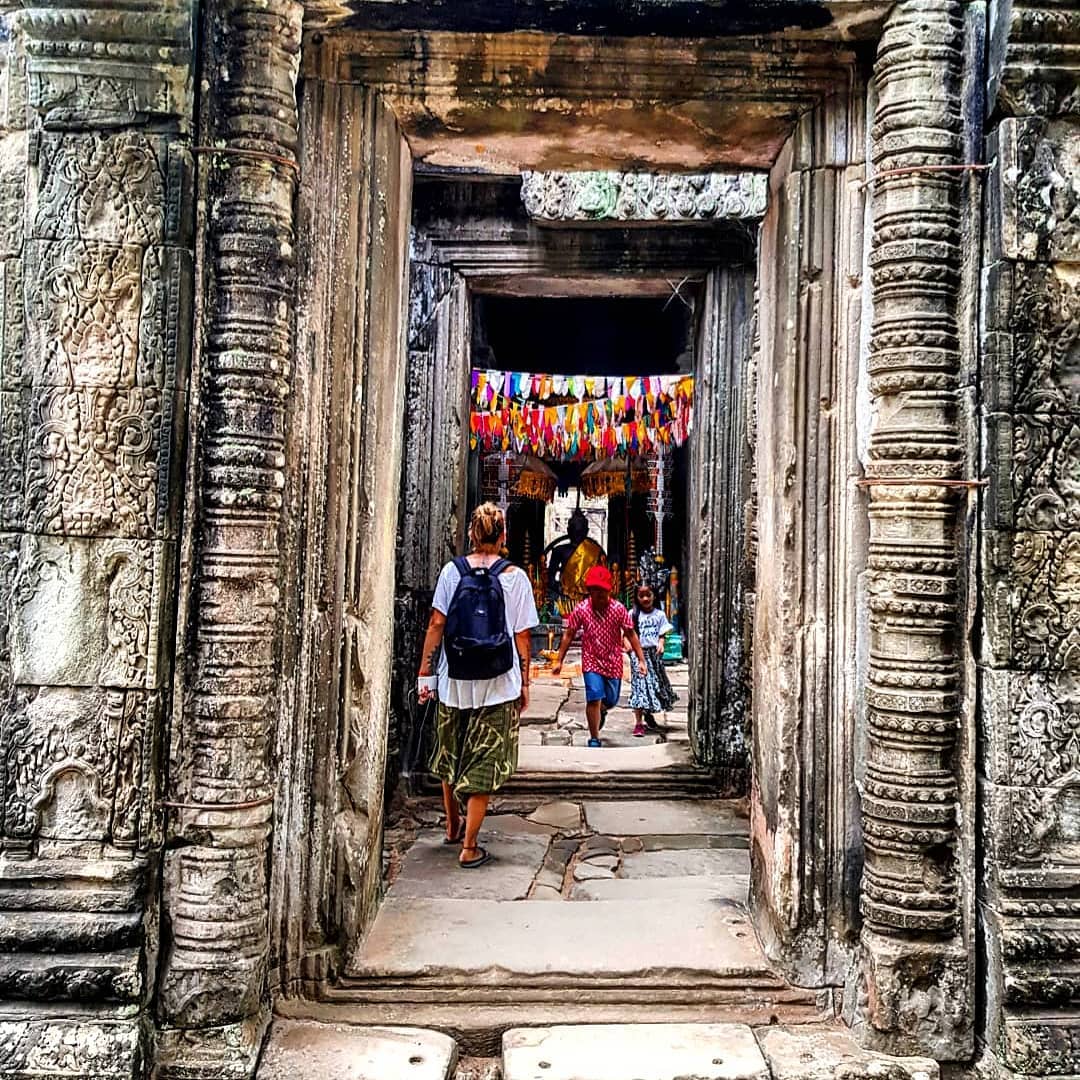
Its structures are contained within two successive enclosure walls and consist of two concentric galleries from which emerge towers preceded to the east by a cloister. This Buddhist monastic complex is currently dilapidated due to faulty construction and poor quality of sandstone used in its buildings. Banteay Kdei had been occupied by monks at various intervals over the centuries until the 1960s.
Banteay Srei
Banteay Srei is a 10th-century Cambodian temple dedicated to the Hindu god Shiva. Located in the area of Angkor, it lies near the hill of Phnom Dei, 25 km (16 miles) north-east of the main group of temples that once belonged to the medieval capitals of Yasodharapura and Angkor Thom. Consecrated on 22 April 967 A.D., It was the only major temple at Angkor not built by a monarch.
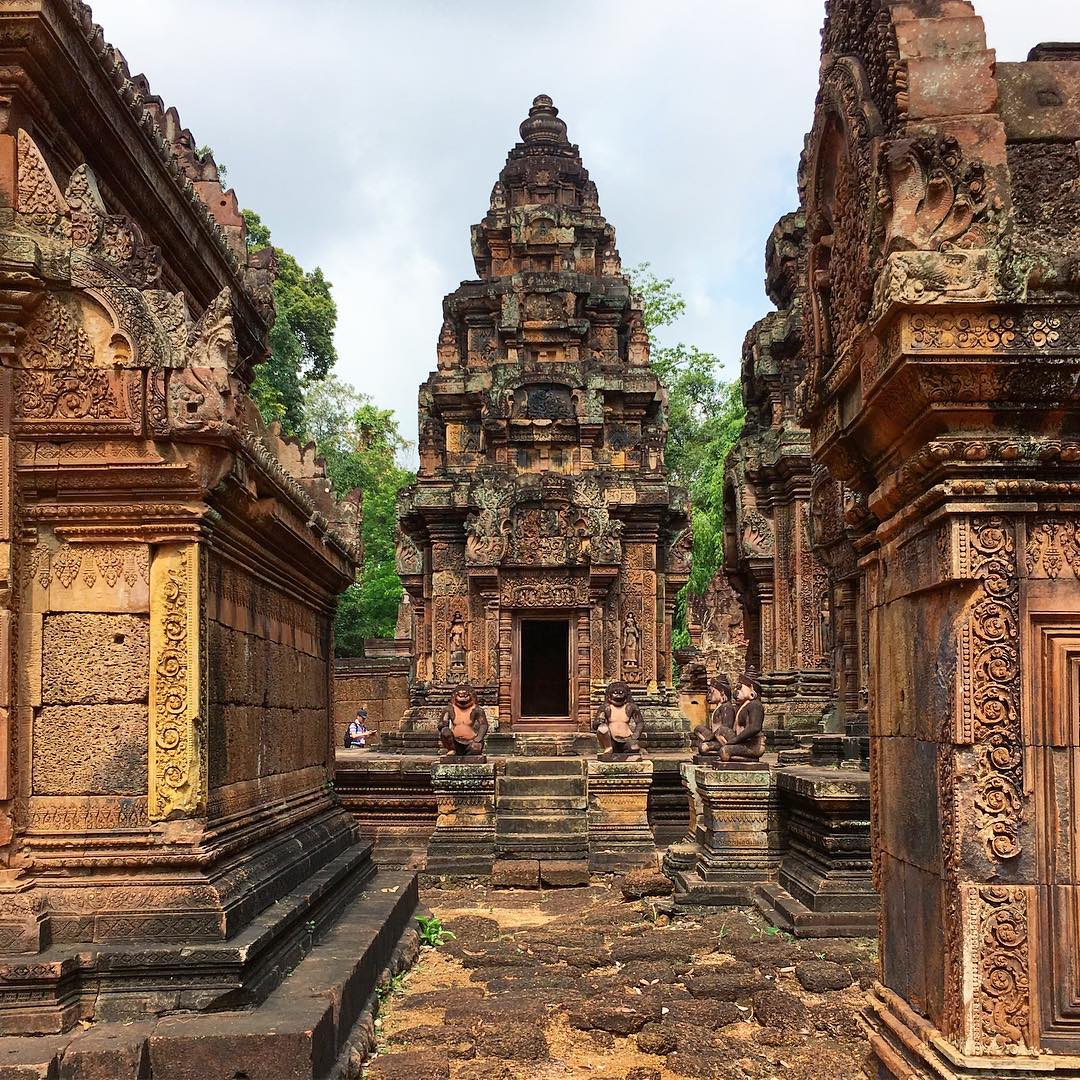
It is built largely of red sandstone, a medium that lends itself to the elaborate decorative wall carvings which are still observable today. The buildings themselves are miniature in scale, unusually so when measured by the standards of Angkorian construction. These factors have made the temple extremely popular with tourists, and have led to its being widely praised as a "precious gem", or the "jewel of Khmer art”.
Prasat Kravan
Prasat Kravan is a small 10th-century temple consisting of five reddish brick towers on a common terrace, located at Angkor, Cambodia south of the artificial lake called Srah Srang. The temple was dedicated to Vishnu in 921 CE. It is oriented to the East and surrounded by a small moat.

The temple’s exterior is striking for its classical lines and symmetry. The central and the south tower have superstructures which take advantage of false perspective by simple means of diminishing tiers. The sanctuary's interiors are remarkable for the large bas-relief depictions of Vishnu and Lakshmi that have been carved into the walls of reddish brick, connected by a vegetable compound.
Tasom
Ta Som is a small temple at Angkor, built at the end of the 12th century for King Jayavarman VII. It is located northeast of Angkor Thom and just east of Neak Pean. The King dedicated the temple to his father. The temple consists of a single shrine located on one level and surrounded by enclosure laterite walls. Like the nearby Preah Khan and Ta Prohm, the temple was left largely unrestored, with numerous trees and other vegetation growing among the ruins.

Designed to be entered from the east, Ta Som is surrounded by a moat and enclosed by three laterite walls which are broken by two sets of entrance ways. The entrance ways are cross-shaped and contain a small room on each side along with windows containing balusters. The main structure of the gopura is carved with four faces in the Bayon style.
Pre Rup
Pre Rup is a Hindu temple at Angkor built as the state temple of Khmer king Rajendravarman and dedicated in 961 or early 962. The temple’s name is a comparatively modern one meaning "turn the body". It is a temple mountain of combined brick, laterite and sandstone construction. Pre Rup was dedicated to the Hindu god Shiva, and it was built by Yasovarman I in the previous century.

Located just south of the East Baray, Pre Rup is aligned on a north-south axis with the East Mebon temple, which is located on what was an artificial island in the baray. Pre Rup's extensive laterite and brick give it a pleasing reddish tone that is heightened by early morning and late afternoon sunlight. This reflects the common belief among Cambodians that funerals were conducted at the temple, with the ashes of the body being ritually rotated in different directions as the service progressed.
Preah Khan
Preah Khan is a temple at Angkor built in the 12th century for King Jayavarman VII to honor his father. It is located northeast of Angkor Thom and just west of the Jayatataka baray, with which it was associated. It was the center of a substantial organization, with almost 100,000 officials and servants. The temple’s name, meaning "holy sword", is derived from the meaning of the original - Nagara Jayasri (holy city of victory)
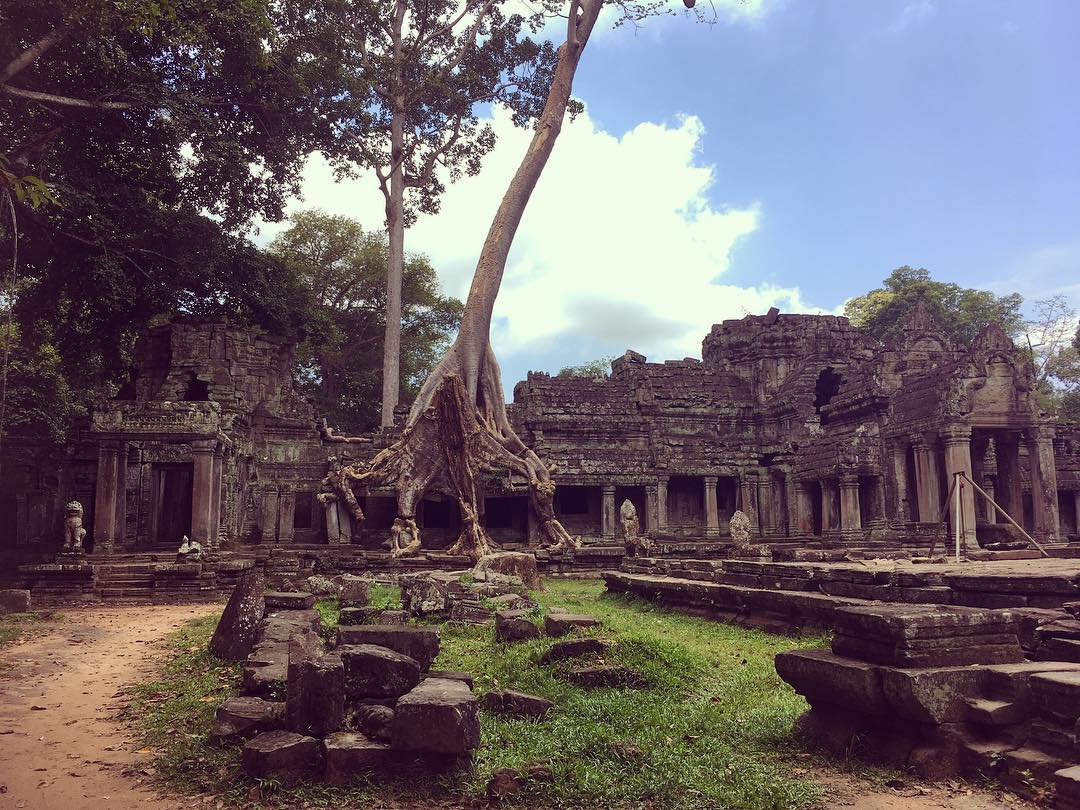
The temple is flat in design, with a basic plan of successive rectangular galleries around a Buddhist sanctuary complicated by Hindu satellite temples. Like the nearby Ta Prohm, Preah Khan has been left largely unrestored, with numerous trees and other vegetation growing among the ruins.
Phnom Bakheng
Phnom Bakheng is a Hindu and Buddhist temple in the form of a temple mountain. Dedicated to Shiva, it was built at the end of the 9th century, during the reign of King Yasovarman (889-910). It was the architectural centerpiece of a new capital, Yasodharapura, that Yasovarman built when he moved the court from the capital Hariharalaya in the Roluos area located to the southeast.

Constructed more than two centuries before Angkor Wat, Phnom Bakheng was in its day the principal temple of the Angkor region. Located atop a hill, it is nowadays a popular tourist spot for sunset views of the much bigger temple Angkor Wat, which lies amid the jungle about 1.5 km to the southeast. Since 2004, World Monuments Fund has been working to conserve the temple.
Traveling tips
- If you buy a ticket after 4.45pm, entry into the temple is free that evening before the ticket starts the next day – so enjoy an additional sunset for free.
- Temples’ opening times: 5 am - 6 pm. (Banteay Srei closes at 5 pm.)
- The winter months from November to February are the peak travel season for Siem Reap. These months are cool and dry, avoiding the extremes of heat and precipitation you’d find in other times of the year.
- The best way to visit Siem Reap is to book a tour to see all of the incredible temples. We provide the Inspitrip tour with local English speaking tour guides, transport, entrance fees, and lunch are covered